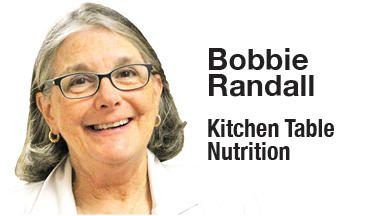Life is short, try eating your dessert first
- col-bobbie-randall
- May 1, 2025
- 566
As a group of people slowly arrived at the luncheon, the tables were prepared for a delightful meal. The early arrivals chose their seats, influenced by the variety of pies placed at each place setting.
While waiting for the serving of the main course, a few people picked up their forks and dove into their assigned pie. As he finished the last bit of crust on his plate, one gentleman laughed and quoted Jacques Torres, a famous chocolatier, “Life is too short. Eat dessert first.”
Having dessert first is unconventional, but it is fun. It makes you feel like you are in control of life and reminds you not to take things so seriously. Sweet treats trigger a release of dopamine, a neurotransmitter associated with pleasure and reward, leading to a feeling of satisfaction and well-being.
Parents often use desserts as a child’s reward for completing a healthy meal. It becomes so ingrained in our minds that we believe it is the only way to eat dessert, as a job well done. We form a tradition out of what was originally a behavior management system.
Some studies suggest eating dessert first may lead to a decreased calorie intake for the main meal. Sugar in the dessert may make you feel fuller and more satisfied, potentially leading you to eat a lighter and smaller portion of the main course without second helpings. This could be positive or negative.
People may find they enjoy dessert more when eaten before a meal, allowing them to savor the sweet flavors fully. Dentists may recommend sugary treats first, relying on the meal to scour the sugar from the crevices in the teeth to avoid cavities.
Blanket recommendations do not allow for individual differences, medical history or unique nutritional needs. Those dealing with diabetes may need to quickly raise their blood sugar levels before a meal to avoid complications or overeating.
If an eating experience is pleasurable and comforting, consuming a sweet pie or cake adds to the feel-good feeling of the meal. Forgoing the treat while declaring desserts as forbidden can backfire by intensifying cravings.
It takes time for your brain to register that you are full after a meal. Often, dessert is offered immediately following the main course. Waiting 15-20 minutes after your meal before indulging in a sweet treat allows time to decide if you have the desire or the room for dessert in your stomach.
Advice for the best time to eat sweets varies. Nutrition is not one-size-fits-all. Placing rules around when people should enjoy dessert is a cultural decision. Dessert after the main courses is mainly a Western tradition. In many parts of Asia, sweets are eaten any time you want, sometimes before or during meals.
From a cultural perspective, dessert has become a customary part of the meal, signaling the end of the meal, and is often associated with special occasions or celebrations. Eating dessert first or last is a matter of personal preference and doesn’t have a universally better option from a health perspective. It is a matter of personal preference. “Life is short. Eat dessert first.”
Bobbie Randall is a registered, licensed dietitian. Email her at bobbierandallrd@gmail.com.

